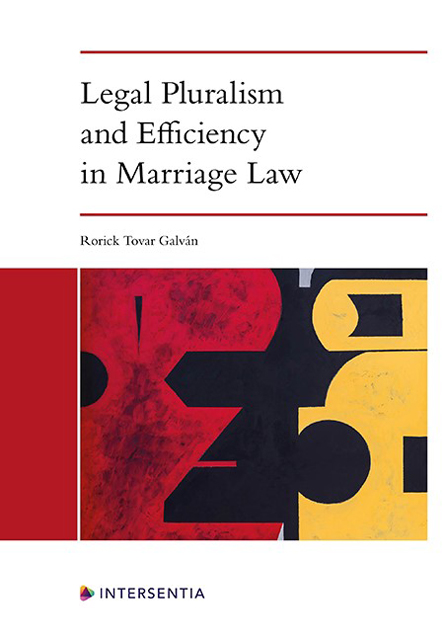Book contents
- Frontmatter
- Dedication
- Miscellaneous Frontmatter
- Foreword
- Preface
- Acknowledgments
- Contents
- List of Cases
- Introduction: Uncertainty and Inconsistency Surrounding the Determination of the Applicable Law in the EU Instruments on Matrimonial Issues
- Part I Economics As A Point Of Departure To Explain The Substantive Rules On Matrimonial Issues
- PART II Economics as a Point of Departure to Build a System of Conflict of Laws For Matrimonial Issues
- Conclusion: Certainty, Precision, Coherence, and Simplicity in the Determination of the Applicable Law
- Bibliography
- Index
- About the Author
Chapter 4 - Substantive Marriage Law from a Law and Economics Perspective
Published online by Cambridge University Press: 17 December 2022
- Frontmatter
- Dedication
- Miscellaneous Frontmatter
- Foreword
- Preface
- Acknowledgments
- Contents
- List of Cases
- Introduction: Uncertainty and Inconsistency Surrounding the Determination of the Applicable Law in the EU Instruments on Matrimonial Issues
- Part I Economics As A Point Of Departure To Explain The Substantive Rules On Matrimonial Issues
- PART II Economics as a Point of Departure to Build a System of Conflict of Laws For Matrimonial Issues
- Conclusion: Certainty, Precision, Coherence, and Simplicity in the Determination of the Applicable Law
- Bibliography
- Index
- About the Author
Summary
The right to marry is recognized in a number of domestic laws and international conventions as being of pivotal importance for the proper and harmonious development of a person. The US Supreme Court has attested to the constitutional status of the marital bond on several occasions. The Council of Europe regards the right to marry as a basic human right, when it states in Article 12 of the European Convention on Human Rights : “men and women of marriageable age have the right to marry and to found a family, according to the national laws governing the exercise of this right”. The right to marry and right to found a family is also included in Article 9 of the Charter of Fundamental Rights of the European Union. A similar provision is contained in many international documents, like the International Convention on Civil and Political Rights (Article 23 paragraph 2), the American Convention on Human Rights (Article 17 paragraph 2) and the Universal Declaration of Human Rights (Article 16 paragraph 1).
The recognition of the right to marry as one of the basic freedoms has helped abolish discriminative restrictions and expanded this right to groups of people who were not formerly permitted to celebrate it. Although the legislation of a number of national jurisdictions still constrains this right, there is a clear trend to protect and safeguard it regardless of the religion, race or gender of the prospective spouses. The invalidity of laws prohibiting interracial unions, as well as the extension of marriage rights to same-sex couples are a consequence of the recognition of its fundamental status. However, such recognition in domestic legislation and international conventions does not help to explain why people get married or what the logic underlying marriage law is. The regulation of marriage in international conventions as well as the development of this right by supreme or international courts establishes limits to the discretion of lawmakers when regulating marriage. But such insights – despite their importance – are not enough to deduce the central features of this institution in modern legislation.
- Type
- Chapter
- Information
- Legal Pluralism and Efficiency in Marriage Law , pp. 113 - 118Publisher: IntersentiaPrint publication year: 2022



